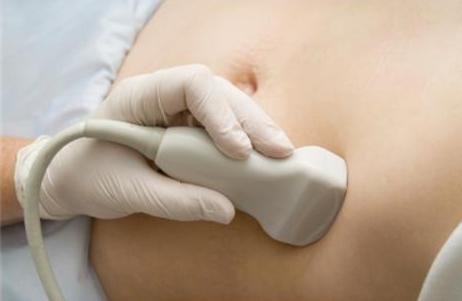Low water during pregnancy – what is dangerous and how to treat it?
In comparison with the excess amount of amniotic fluid, lack of water is a rarer phenomenon. But, as a rule, it indicates the presence of abnormalities during pregnancy. Amniotic fluid is, first of all, the protection of the future crumbs from various infections and adverse factors, as well as a source of nutrition for the fetus for its full intrauterine development. Low water not only interferes with the normal development of the child, but also pose a very serious danger to his health and life.
What are the causes of oligohydramnios and what treatment does modern medicine offer?
See also: Why is breech presentation of the fetus dangerous and what to do?

The content of the article:
How to determine oligohydramnios during pregnancy?
There is usually no clearly defined symptomatology with oligohydramnios.
It is determined exclusively by a doctor if …
- The abdominal circumference does not correspond to the gestational age.
- The location of the fundus is not high enough.
- Ultrasound confirms the lack of water.
When confirming low water, the degree of its severity and the general condition of the fetus are determined.

It is known 2 forms of low water in medicine:
- Moderate
Symptoms are not expressed, no disturbances are observed in the state of health. Amniotic fluid deficiency is confirmed only by ultrasound. - Expressed
Symptoms: the size of the uterus, the circumference of the abdomen, the height of the fundus of the uterus (in accordance with the norms for the duration of pregnancy); fetal movement is painful; the state of health worsens (nausea, weakness); there are pains in the lower abdomen.
The danger of low water is risks regarding the course of pregnancy and the birth itself…
Possible complications with oligohydramnios
- Fetal hypoxia.
- The risk of termination of pregnancy (50% of cases with a pronounced form).
- Delayed fetal development.
- Postpartum hemorrhage.
- Weak labor activity (up to 80% of cases).
- Anomalies in the development of the fetus due to physical inactivity and compression of the fetus due to a lack of free space in the uterus.
- Neonatal weight deficiency (20% – with a moderate form, up to 75% – with a pronounced one).
Causes of lack of water – who is at risk?
Medicine has not fully studied the true causes of low water – although, in most cases, among the reasons are noted individual characteristics of the maternal organism.

Factors provoking the occurrence of oligohydramnios in pregnant women:
- Underdevelopment of the epitheliumcovering the amniotic fluid, or a decrease in its secretory function.
- High pressure expectant mother (significant jumps in blood pressure).
- Fetal pathologies (kidney defects).
- Bacterial infections, transferred or not cured in time by the mother; chronic diseases of the cardiovascular system, infectious diseases of the genitourinary system, genitals.
- Multiple pregnancy (uneven distribution of blood in the placenta, uneven distribution of nutrients among all children in the womb).
- Postponing pregnancy (loss of function of the placenta membrane).
- Smoking.
- Influenza, SARS and other viral infections.
- Late gestosis.
- Placental pathology (aging, failure, abnormalities).
Treatment of oligohydramnios and the choice of tactics for childbirth
To choose the most effective method of treatment, the primary task of the doctor is determine the cause and severity of oligohydramnios… Usually, the following examinations are carried out for this:
- Tests and smears for sexually transmitted diseases.
- Ultrasound and Doppler ultrasound.
- CTG of the fetus.
Treatment will depend on the test results.

Of the main methods of treatment:
- A clear diet. See also: Proper nutrition of a pregnant woman in the 1st, 2nd, 3rd trimesters.
- Comprehensive treatment, aimed at improving the work of the placenta, its blood flow and metabolism in it (drug therapy, vitamins, etc.).
- Drug therapy, aimed at timely treatment of the underlying disease (causes of dryness).
- Additional regular examinations to control the possible development of pathologies.
- Prohibition of carrying weights.
- Fresh air and calm walks.

Outpatient treatment is permissible for moderate oligohydramnios.… In this situation, restriction of physical activity, a sparing regimen, drug therapy, and regular visits to a doctor are indicated.
See also: Pregnancy weight gain table
With a pronounced form, treatment in a hospital is indicated. In the event of a threat to the health of the fetus (if the gestational age allows), early delivery using a cesarean section may be recommended.
Despite the possible risks of complications during childbirth, most often the outcome of pregnancy is favorable, and the condition of the babies born is satisfactory.
The Colady.ru website warns: self-medication can harm your health, as well as the health of the unborn baby! The diagnosis should be made only by a doctor after an examination. Therefore, if you find symptoms, be sure to contact a specialist!
What to give a friend?
Gift Certificate! You can give it to your loved one or use it yourself.
And we also give away a certificate for 3000 rubles every month. among new email subscribers. Subscribe!
Select a certificate in the store
Visit Bologny for more useful and informative articles!




